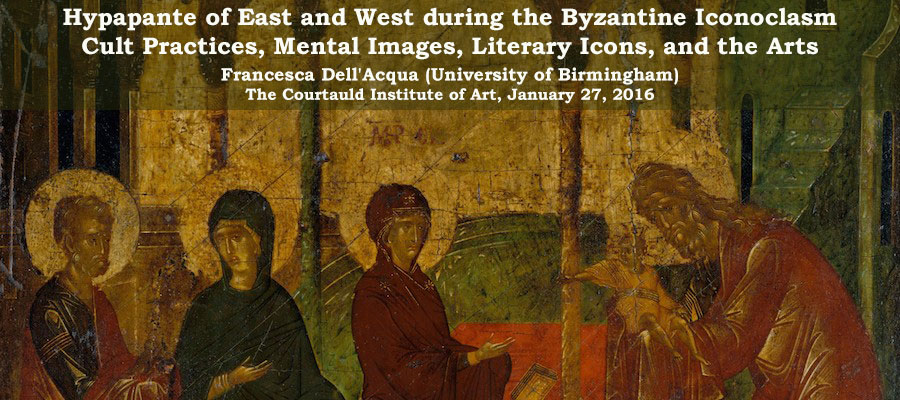Hypapante of East and West during the Byzantine Iconoclasm: Cult Practices, Mental Images, Literary Icons, and the Arts, lecture by Francesca Dell'Acqua (University of Birmingham), The Courtauld, January 27, 2016, 5:30–7:00pm
By focusing on the feast of the Presentation at the Temple, this lecture will present a wider research project on the development and dissemination of theological issues and their “translation” into literary and visual imagery in the period 680–850, when a great debate about the cult of sacred images engaged the East and West. The place of sacred images in the Christian religious mentality – the way in which cult images are depicted, perceived, venerated, and chosen as personal talismans and intercessors – was in fact radically shaped by that intense period. This notwithstanding, the political, cultural, and artistic interactions and the developments in Christian mentalities between the West and East during and soon after the Iconoclasm are a “grey area” in Medieval and Byzantine studies, having been dealt with only occasionally and discretely.
